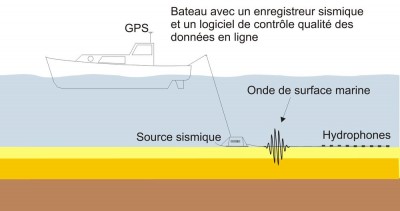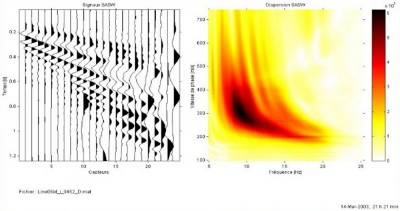The equipment is towed on the sea bottom and seismic shots are carried out at constant distance. The seismic data are recorded on board and an online quality control is carried out in order to modify, if necessary, on the acquisition parameters.
 Acquisition set-up for marine surface wave (UMASW)
Acquisition set-up for marine surface wave (UMASW) On-line in-house surface wave data processing software (signal and dispersion)
On-line in-house surface wave data processing software (signal and dispersion)